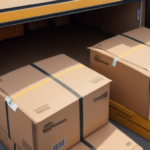Understanding Cost per Return: How to Measure It and Why It Matters for E-Commerce Operations
E-commerce has revolutionized the retail landscape, allowing customers to shop conveniently from their homes. However, with this convenience comes the challenge of managing returns effectively. One critical metric in this area is the cost per return. This article delves into what cost per return is, its significance, and strategies to measure and reduce it in your e-commerce business.
Defining Cost per Return and Its Significance in E-Commerce
Cost per return refers to the total expenses incurred when processing and managing returned merchandise. This includes restocking, inspecting for damage, refunds, and associated labor costs. According to a 2017 Accenture Retail Product Recall Report, the average cost per return can account for 15% to 30% of the product's price.
Understanding cost per return is vital because it directly affects the bottom line. High return costs can erode profits and signal underlying issues such as product quality flaws, poor customer experience, or operational inefficiencies. Addressing these areas not only reduces costs but also enhances customer satisfaction and loyalty.
The Basics of Measuring Cost per Return for E-Commerce Businesses
Measuring cost per return involves a systematic approach:
- Identify Direct Costs: Track expenses related to shipping, restocking fees, labor, and any additional handling costs.
- Analyze Contributing Factors: Examine reasons behind returns, such as product quality, sizing issues, customer expectations, and shipping logistics.
By isolating these factors, businesses can gain insights into their return processes and identify areas for cost reduction. Utilizing analytics tools can provide a clearer picture of return patterns and help in making informed decisions.
Incorporating Data and Analytics
Leverage data analytics to monitor return rates and identify trends. Tools like Shopify Analytics or Google Analytics can be instrumental in tracking metrics that influence cost per return.
Factors Contributing to High Cost per Return in E-Commerce
Several factors can drive up the cost per return:
- Product Quality Issues: Defects, damages, or misleading product descriptions can lead to increased return rates.
- Poor Customer Experience: Inadequate product information, slow shipping, or subpar customer service can frustrate customers, prompting returns.
- Logistical Errors: Mistakes in shipping and fulfillment, such as delayed deliveries or incorrect items, contribute to higher return costs.
- Complicated Return Policies: Unclear or restrictive return policies can lead to customer dissatisfaction and increased returns.
- High Shipping and Handling Costs: Expensive return shipping can deter customers but also escalate costs for the business.
Impact of Product Quality and Customer Experience on Cost per Return
Product quality and customer experience are pivotal in influencing return rates. High-quality products reduce the likelihood of returns, while an excellent customer experience fosters trust and loyalty. Investing in quality control and enhancing the customer journey can significantly lower the cost per return.
For instance, providing detailed product descriptions and high-resolution images helps set accurate customer expectations, minimizing returns due to mismatched expectations. Additionally, offering responsive customer service can address issues proactively, preventing returns.
Research from the National Center for Biotechnology Information highlights that improving product quality and customer service can decrease return rates by up to 20%.
Calculating and Interpreting Your E-Commerce Business's Cost per Return
Calculating cost per return is straightforward:
- Total Return Costs: Sum all expenses related to processing returns over a specific period.
- Total Revenue: Calculate the total revenue generated in the same period.
- Formula: Cost per Return (%) = (Total Return Costs / Total Revenue) x 100
Interpreting this metric requires understanding industry benchmarks and your specific business context. A higher percentage indicates the need for strategic interventions to reduce return-related expenses.
For example, if an e-commerce store has $50,000 in return costs and $1,000,000 in revenue, the cost per return would be 5%. Comparing this with industry standards can help assess performance and identify improvement areas.
Strategies for Reducing Your E-Commerce Business's Cost per Return
Implementing effective strategies can significantly lower the cost per return:
- Enhance Product Descriptions and Imagery: Provide comprehensive and accurate product information to set correct customer expectations.
- Improve Product Quality: Invest in higher quality materials and manufacturing processes to minimize defects and damages.
- Optimize Shipping Logistics: Partner with reliable fulfillment centers and utilize efficient shipping methods to reduce errors and delays.
- Streamline Return Processes: Simplify the return process to make it user-friendly, reducing the time and cost associated with handling returns.
- Offer Incentives: Encourage customers to keep products by offering discounts or store credits instead of returns.
Implementing Predictive Analytics
Using predictive analytics can help anticipate return trends and address issues before they escalate. Tools like IBM Watson can offer insights into customer behavior and return probabilities.
The Importance of Tracking Your Cost per Return Over Time
Monitoring cost per return over time is essential for maintaining optimal e-commerce performance. Regular tracking helps identify trends, seasonal variations, and the effectiveness of implemented strategies.
For example, observing an increase in return costs during holiday seasons can prompt the implementation of temporary measures to handle higher volumes efficiently. Continuous monitoring ensures that cost-reduction strategies are effective and allows for timely adjustments as needed.
How Technology Can Help Lower Your E-Commerce Business's Cost per Return
Technology plays a crucial role in minimizing cost per return:
- Automated Product Descriptions: AI-driven tools can generate accurate and detailed product descriptions, reducing misinterpretation and returns.
- AI Chatbots: Providing instant customer support helps resolve issues quickly, decreasing the likelihood of returns.
- Shipping and Fulfillment Software: Streamlining logistical processes ensures accurate and timely deliveries, reducing return rates.
Integrating advanced technologies like Salesforce Commerce Cloud can enhance operational efficiency and customer satisfaction, leading to lower return costs.
Case Studies: Successful E-Commerce Businesses That Have Reduced Their Cost per Return
Several e-commerce giants have effectively managed their cost per return:
- Amazon: Utilizes predictive analytics and machine learning to optimize inventory and shipping, reducing return rates and associated costs.
- Zappos: Focuses on exceptional customer service by offering free shipping and returns, coupled with responsive support, enhancing customer loyalty and minimizing return costs.
- ASOS: Implements detailed sizing guides and virtual try-on features, decreasing returns due to sizing issues.
These examples demonstrate that investing in quality, customer service, and technology can lead to significant reductions in cost per return and overall operational efficiency.
Conclusion
Understanding and managing cost per return is crucial for the financial health and success of e-commerce businesses. By accurately measuring return costs, analyzing contributing factors, and implementing strategic measures to reduce them, businesses can enhance profitability and customer satisfaction. Leveraging data analytics and technology further supports these efforts, ensuring sustained growth and operational excellence.




















